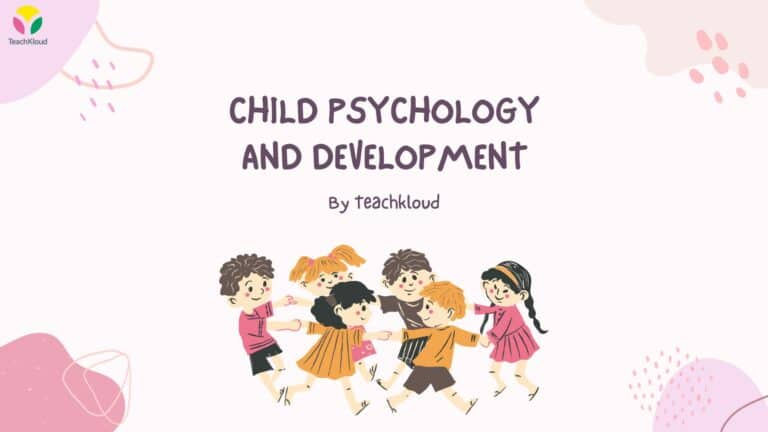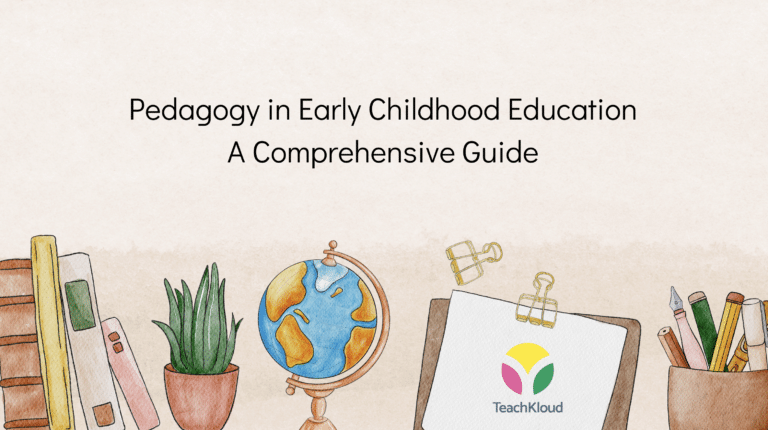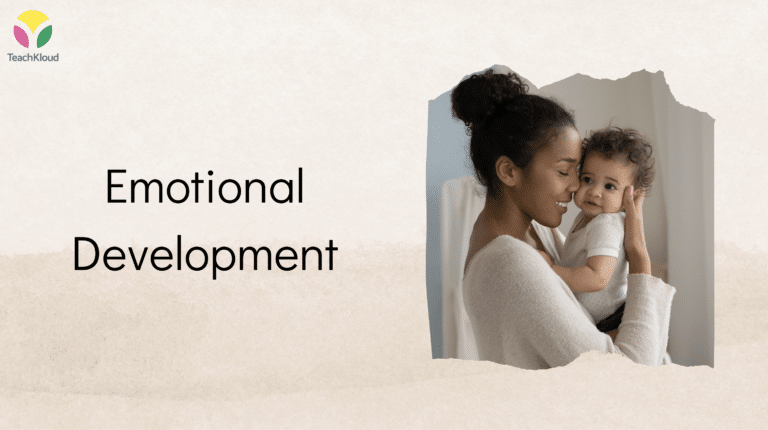Article Contents
- Importance of Choosing the Right Preschool
- What is a High-Quality Preschool?
- What to Expect from a High-Quality Preschool
- Environment
- Relationship Building
- Teaching Methods
- Engaging with Families
- What to Expect from High-Quality Preschool Teachers
- Red Flags For Preschools to Avoid
Preschool is the exciting time before kindergarten when children ages 3-4 are celebrated for their curiosity, begin to learn social skills and develop an initiative for learning; if fostered in the right environment. Choosing the best education centre for early child development is crucial to promote life-long learning. Research has shown there are a number of benefits that last beyond the beginning of their school career.
Importance of Choosing the Right Preschool
A study conducted by MIT reported on the long-term effects of students and found that those who attended preschool were more likely to graduate high school and attend college. Not only this, but compared to students who did not participate in an early childhood education programme, preschool exposed students had fewer suspensions and were less likely to engage in criminal activity, resulting in juvenile detention. But do children genuinely retain the information they learn in preschool? The fact is, it’s not about focusing on math competencies as it is about developing physical, emotional, and social skills as well as critical thinking. In the right preschool environment, children are known to have fewer behavioural problems in middle and high school. Researchers at the Sorbonne University in Paris proved this after completing a study that tracked over 1,400 children from birth to the age of eight years old. This observation studied three key groups: children in a preschool environment, children with caregivers that oversaw less than six kids, and children who stayed at home with a family member. Parents participated in the study by rating their children’s development skills at different stages.
Comparing results, researchers found that children in a preschool environment for at least one year were “less likely to have high levels of emotional symptoms, peer relationship problems, hyperactivity/inattention and conduct problems.” In a report from Global News, Jill Roberts, founder of Family Sparks and associate professor at the University of Victoria, stated, “these programs not only focus on play and socialisation but also educational and nutritional components from highly-trained early childhood education professionals.”
However, the problem isn’t convincing parents that preschool is essential to their child’s development. It’s finding a high-quality preschool that will positively impact their future. The U.S. National Institutes of Health stressed the benefits of choosing an exceptional daycare centre, rooted in learning by exploration. We have many preschool activities and videos on just this! But, studies have proven they are the catalyst for higher academic success and cognitive achievement in teens who attend preschool and they even display better behavioural skills.
The National Institute of Child Health and Human Development reported that in the facilities they surveyed, less than 10% of preschools were considered “high-quality,” with many falling in average to even subpar. How can you determine the difference between a high-quality preschool with many education centres and their philosophies to choose from? In this article, you’ll learn what a high-quality preschool consists of, the types of teachers you should select and red flags to look out for.
What is a High-Quality Preschool?
While a preschool can seem to have all the bells and whistles on the outside, three key characteristics truly matter. The policies and discipline process of the preschool, the environment your child will be learning in, and the quality of the teachers and their resources. At this point, you don’t need to worry about the competencies of their teacher’s math skills. What you do want to focus on is the philosophy of the preschool and how they encourage learning to take place in their facility. Remember – your child will be shaped by the teacher and the environment more than they will with the curriculum.
A high-quality preschool will support physical, emotional, social, and academic skills as well as speech and fine motor competencies. The environment will be warm, inviting and promote exploration with different areas to play and to learn new things.
What to Expect from a High-Quality Preschool
A high-quality preschool empowers children to follow their curiosity, encourages them to learn creatively, and challenges them to think critically while problem-solving. A child-based learning environment should be the opposite of an adult-centred classroom. The curriculum should not be solely focused on academics but rather on kids being kids, exploring, creating, playing and learning along the way. Parents should focus on finding a preschool that aligns themselves with developmentally appropriate practices (DAP) that will help their child become a life-long learner and self-starter. Here’s what that typically looks like in today’s classroom.
Environment
Aside from being warm, friendly, and intentionally designed to promote high-quality learning, the preschool setting should be filled with signs and labelled objects to help children begin to create a connection with objects, symbols, words and letters. According to NC State College of Education’s Assistant Professor, Michael Little, Ph.D., a child’s brain is highly impacted by the contexts and environments that surround them. Not only does this make preschool essential for positive development, but stresses the importance of the space in which your child learns.
In a preschool setting, the room should be arranged with play areas in mind, taking into consideration adult-only sections and limiting them as much as possible. In an exceptional preschool environment, you may see the space arranged to encourage learning through a variety of intentional stimuli, which includes:
- Consideration of active and quiet activities, where they are placed, and how to effectively protect each space.
- Creating smaller learning areas with a variety of activities and enough space for multiple children to engage in the activities at once.
- Various textures and colours are used throughout, which are comfortable, organised, and clean for the children to explore.
- Furnishings and resources support child-size activities.
- Learning materials and visual aids reflect every child’s family, culture and the community in which they live. Children’s work should be displayed at eye level to encourage continued exploration and engagement in activities.
- Learning materials should be labelled, provide challenge to the child but not frustrating with help, and varied between all stages of development, including academic, physical, and social.
It should go without saying that a high-quality preschool will provide your child with a clean and healthy environment, with safety as a top priority. Furnishing should be in good repair, and hand washing should be promoted often, as well as cleaning/disinfecting any areas or materials.
Relationship Building
Relationship building with both adults and peers is crucial to encourage questions that empower lifelong learning skills during this development stage. Teachers and facilitators should ensure that all adult-child interactions are:
- Respectful, supportive, accepting and intentional, even in spontaneous interactions.
- Understanding and respectful of children’s individual cultures, using both verbal and non-verbal cues.
- Acknowledging children’s efforts, accomplishments and celebrating the learning process rather than the end result (i.e. process rather than product).
- Child-to-child interactions should be supported in the high-quality preschool by:
- Encouraging problem-solving capabilities within peer groups during activities or when conflicts arise.
- Identifying feelings and discussing them, allowing children to lead the conversation while the teacher is merely a guide for the discussion.
- Encouraging playtime that promotes brain growth and facilitates social learning instead of the “figure it out” method, which can lead to frustrations.
Teaching Methods
A high-quality preschool promotes observation and pivoting as much as they do the plan and curriculum. Rather than lecturing, note-taking and regurgitation, quality educators engage with the children to allow thinking to occur on a deeper level. Educators in a preschool setting are a beacon of inspiration for continued learning, rather than fear of getting “things wrong.” That is why a high-quality preschool places more importance on the learning process or journey than the results of academic advancement.
In preschool, educators collect data, children’s work samples, examine personal biases in the classroom and understand children’s development and learning opportunities throughout the day. This helps the teacher adequately reflect and plan activities that will guide the students onto the path of exploration and continued learning. TeachKloud has a fantastic course on child observations, as well as a course on diversity and equality here!
In a high-quality preschool, the preschool educator will work at the children’s pace to establish goals and select learning opportunities based on the observations they have reflected on. These learning opportunities should cover all areas of development rather than focusing on merely academic measures. There should be a clear balance of teacher-guided as well as student-guided learning experiences and playtime.
Parents shouldn’t expect their children to come home suddenly as a math or science whiz. Instead, your typical academic topics such as counting, shapes and the alphabet should be focused on as equally as social skills and daily life knowledge. Rather than losing children’s attention in a lecture-style learning environment, quality educators will engage them with songs, stories, games, and crafts to contribute actively throughout the learning process. Open-ended activities should be plentiful, encouraging children to find different ways to play, think creatively and become problem solvers along the way. Materials should be flexible in terms of how they are used so children can make decisions and experiment rather than one-option learning.
When all of this comes together, you can feel confident about enrolling your child in preschool and the positive impact it will have on their future. “Oftentimes, when children attend high-quality and effective Pre-K programs, they get a really great boost in early skills that set them up for success in elementary school,” said Little, who studies policies and programs that inspire improvements in early education.
Engaging with Families
Children are constantly seeking information while they learn more about the world. This shouldn’t only be fostered during preschool hours. Preschool educators and management at a high-quality preschool encourage involvement through:
- Family orientation, facility tours and open houses.
- Home visits and/or other initiatives that learn about the child’s interests, parents’ goals, and cultural values.
- A system for communication, either daily or weekly, to discuss the progress of the child and how to assist on their next developmental goal through conversations at drop-off/pick-up time, emails, phone calls or virtual meetings. Using childcare management systems like TeachKloud, preschool and childcare settings, can easily communicate, get to know parents and observe child development.
- Inviting families to share traditions, favourite books or activities in the learning environment.
- Providing opportunities for family input on the programme, environment, evaluation efforts and carrying out school experiences at home by involving parents with what they will be learning that week so they can ask questions to promote further learning outside of the classroom.
Watch one parents journey on how engagement with her preschool made her feel like a part of her child’s education and care
What to Expect from High-Quality Preschool Teachers
Selecting a high-quality preschool is crucial for a child’s development that will serve them well in their education beyond elementary or primary school. While a preschool may seem like the perfect choice on the outside, the real determining factor is the educators they employ. During your selection process, it is essential that you consider not only the qualifications of a teacher but the style in which they teach and the behaviours they display. A high-quality teacher should:
- Be positive, caring and poised. Early education, especially in preschoolers, must be built on trust and positive relationships to encourage better learning as well as self-expression. An educator shouldn’t be quick to anger or to display negative emotions but should continue to be poised and intentional for every interaction.
- Educators should have formal post-high school/secondary level training, such as a college degree in child development or early childhood education. Anything under the umbrella of childhood developmental needs is crucial as these educators will have an understanding of how to encourage children within different learning environments.
- Preschool facilitators should be interactive and engaging with the children rather than a lecture-style program. Educators should repeat the child’s words or comment on what they’re trying to say, answer questions and foster positive communication without any negative displays of behaviour such as yelling or demeaning a child through scolding.
- Educators should be able to guide behaviour through explanation and positive strategies as described in detail here, rather than the “because I said so” method. Children must understand why rules are in place rather than blindly following them.
TeachKloud has a free e-Book on attracting and retaining the best preschool educators here.
While many preschools aim to foster lifelong learning, exploration and play, some are overwhelmed with understaffing and inadequate funding. While they may have the best intentions, below, you’ll find what to notice as a red flag when it comes to searching for a high-quality preschool.
- Children are likely wandering around and aren’t truly involved in any learning opportunities. On the opposite end of the spectrum, the educator controls and dictates without listening or guiding, so children are not encouraged to explore or play.
- The educator never participates. They simply “teach the lesson” and allow the children to continue with “worksheets” or in-flexible learning materials that can only be used one way. They don’t ask children questions or make suggestions during their learning experience to encourage deeper exploration and simply tell children what to do and how to do it in an instructional style.
- There is no system in place for educators to communicate with the parents and only talk to families when there is a concern. There is no collaboration between families and the programs that are being carried out.
- Children are treated harshly and well-beyond the preschool’s policies on guiding positive behaviour, there is a mindset on punishment rather than talking through the problem to facilitate growth and learning about how they could have handled the situation differently.
Compared to a daycare or preschool that assists parents by looking after their children while at work, a high-quality preschool program is a polar opposite in the way they approach guiding behaviour, learning, and the environment in which the children participate. A high-quality preschool program will weave motor skills, social skills, academics, emotional growth and vital developmental milestones into the daily schedule, with intentional learning at the forefront.
While preschool is seen as important by parents, the true difference in the connection of early education and long-lasting benefits comes down to the quality of care and engagement from parents, according to a UK study, a high-quality preschool is led by facilitators that care about the children’s learning process, exploration and curiosity more than academic achievement through positive reinforcement.
TeachKloud supports preschools and nurseries to adapt to regulations and compliance requirements while offering resources that encourage communication with parents. Through child observation and reflection journals, as well as access to the Kloud Academy, preschool teachers can find a certified library of professional development courses to assist with high-quality learning. Contact us to find out how we can help teachers focus on students while we focus on bridging the gap between parents, children and program facilitators.




